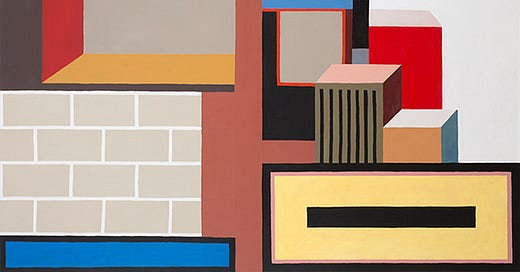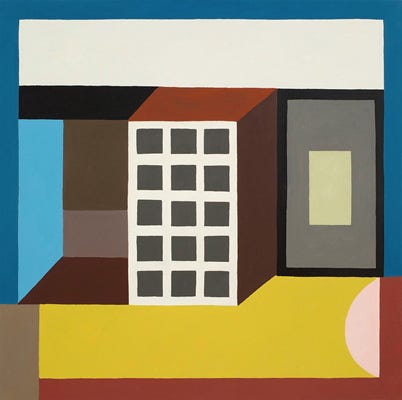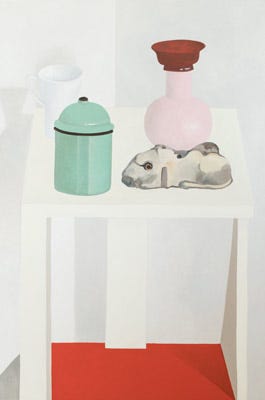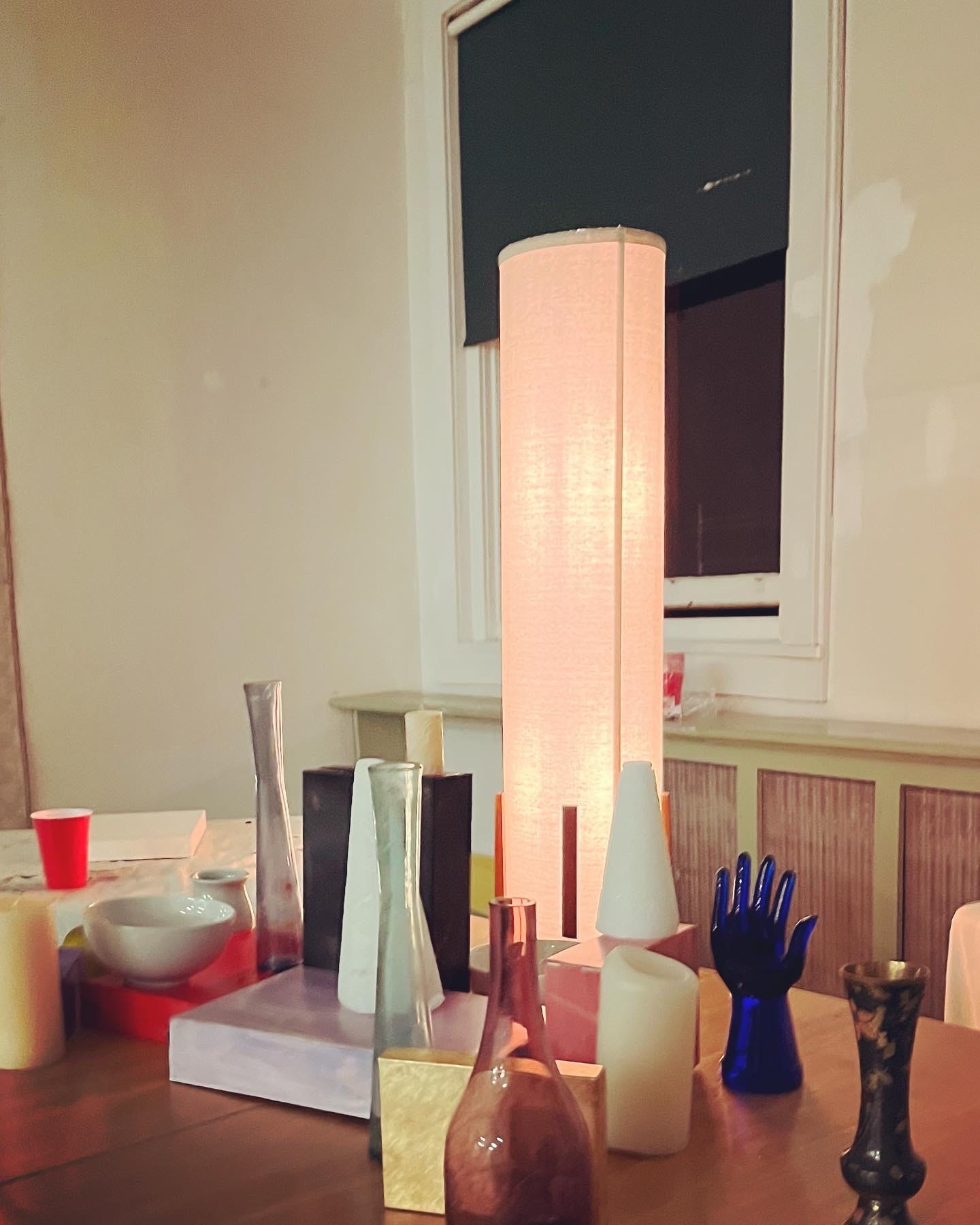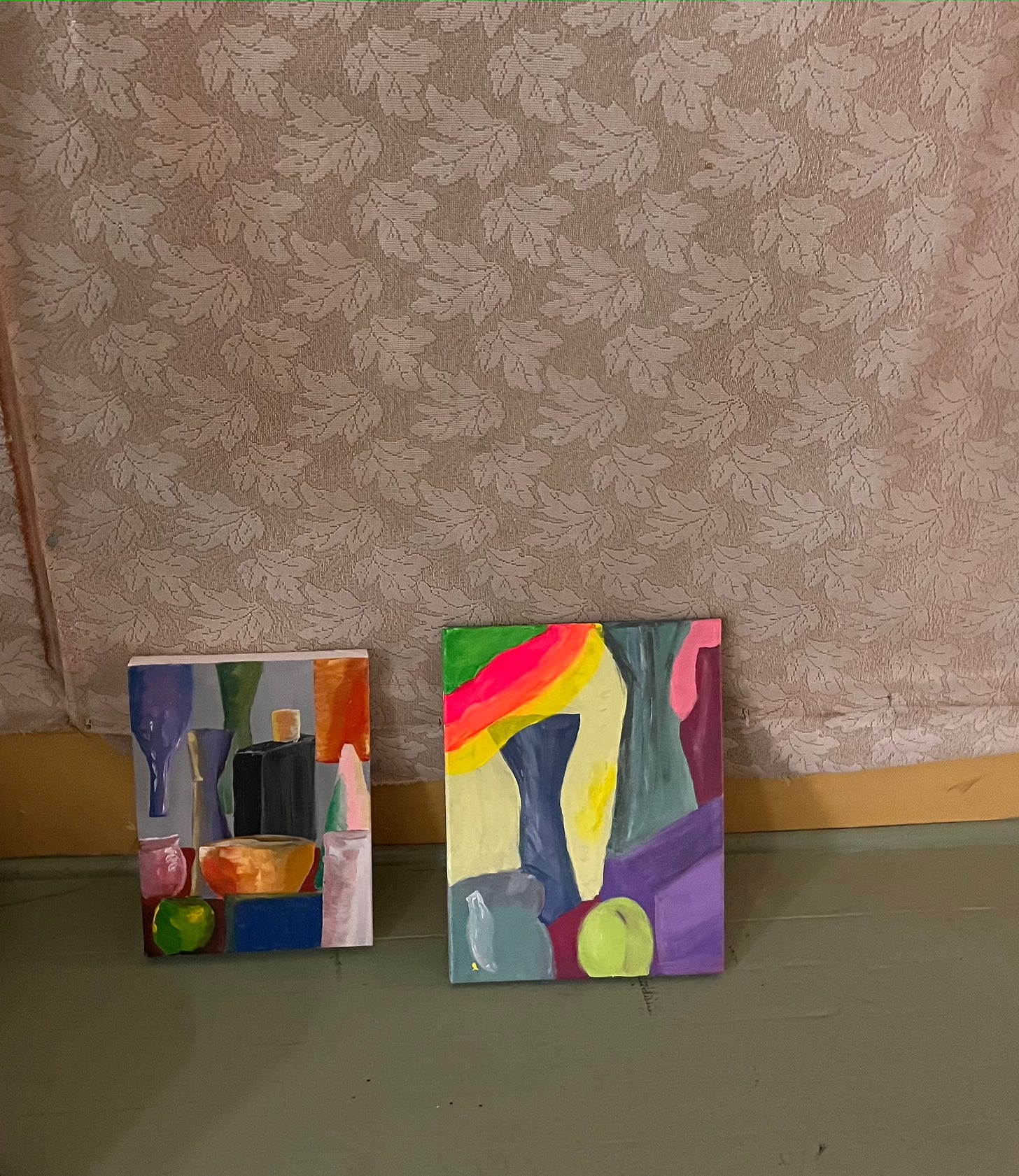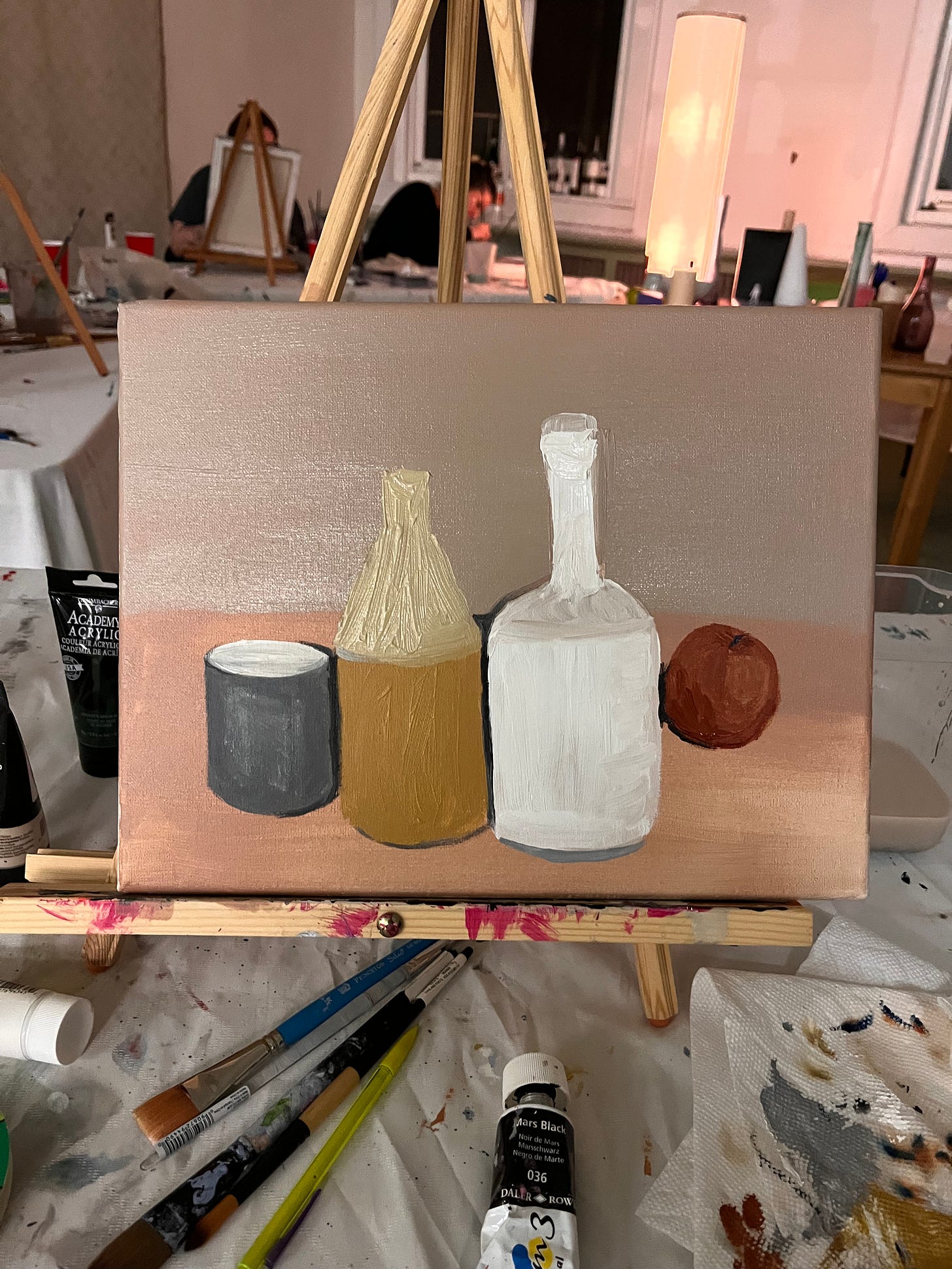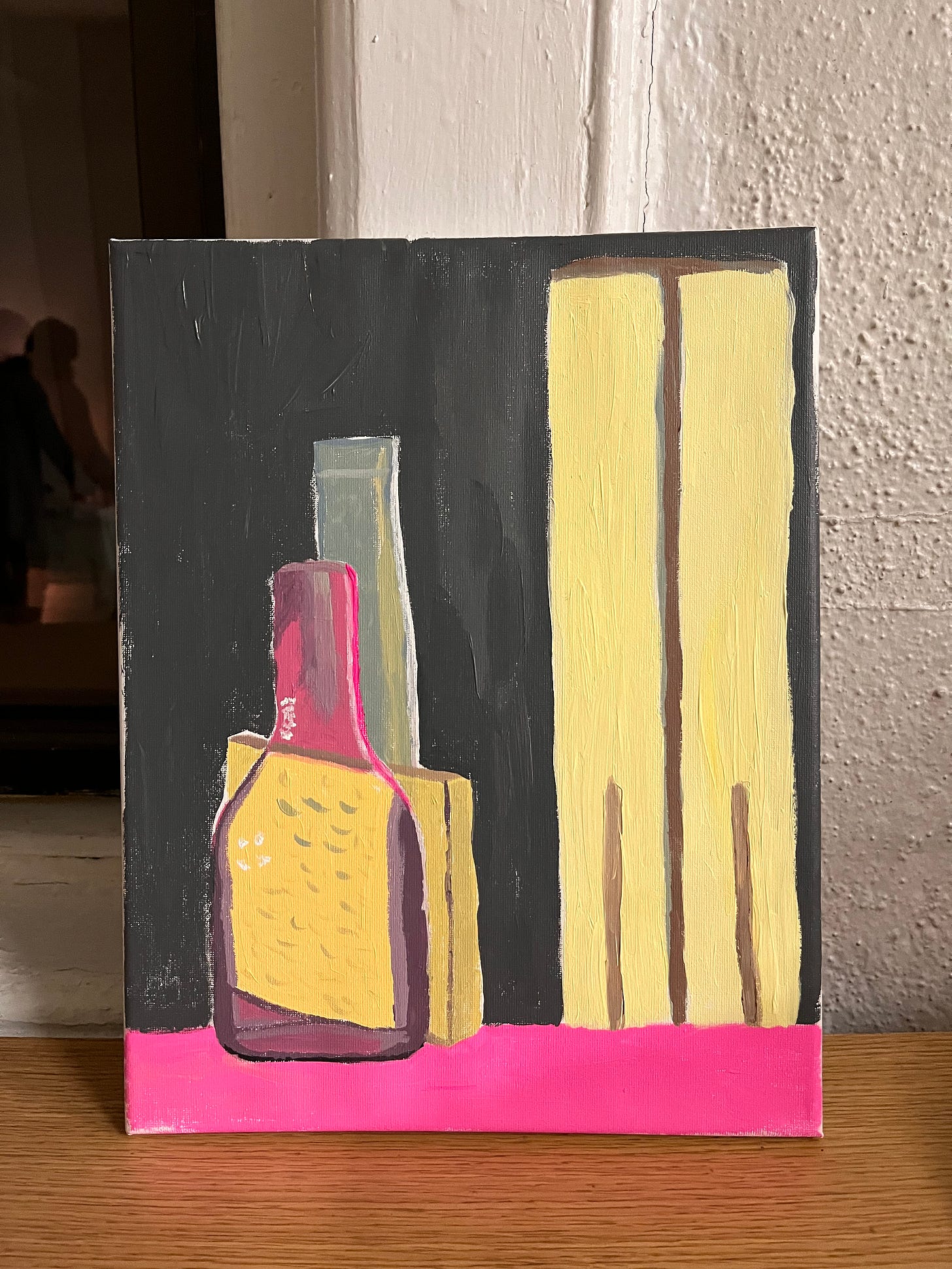Last night I taught a still life class based on the paintings of Nathalie Du Pasquier , a designer and artist who was part of the 1980s design collective the Memphis Group. I wanted to inspire the painters with the sophisticated planes, dreamy water glasses and vaguely familiar, but totally unrecognizable, bottle and box forms that Du Pasquier creates.
I built a simple still life of bowls, vases and brightly-colored cereal boxes before realizing I had not brought my scoop light to better define light and shadow. Since the entire point of the night was to explore light, shadow and how changing value is what helps an artist move a form from 2D to 3D , it was a big deal that I forgot the light.
Luckily, the space I rent is also used by a Zen center (as well as a children’s acting program and several 12-step groups) and the Zen center had a few standing paper lamps in the space so I didn’t have to rely only on the ceiling lights that are very high up in the cathedral-style ceiling.
I set up my still life around one of the lights and circled it with the tables. When I turned off the lights to half of the room and was able to create the light and shadow required to hold a light and shadow class.
The painters selected their seats based on what kind of angles and what levels of value contrast they wanted to capture. Newer painters practiced using shading to create form, and more experienced painters used their color wheels to consider altering value in terms of playing with colors, not just relying on changing value by adding white or black to a hue.
The results were incredible and by that I mean their effort and experimentation was rewarded with great paintings, and the personality of each painter shined through. From Morandi-inspired to rainbow-hued to Kubrickesque, each painter created something pretty amazing.
What did we learn about art by looking at Du Pasquier and the painters that influenced her?
Where your horizon line goes is important. It will determined whether the viewer feels like they are looking down into or up at the objects, which will change how the painting makes the viewer feel.
Still lifes can be storytelling devices. If you want to tell a story via your objects be filled with intention when making color choices & object choices. If you are going to include a perfume bottle and you want the viewer to know that the bottle is Chanel No. 5 because it says something about you, make sure that the shape is recognizable or figure out a way to hint at the branding or do something that is a signal to the viewer that this bottle means something to the painter.
Remember that light and shadow has lots of applications beyond creating form. You can make a sinister landscape by back lighting or create a moody painting by working with a muddy, moody palette. Or you can make something bright and hopeful with a bright, high contrast and high-value palette.
We also looked at De Chirico, who Du Pasquier has said was an influence, and saw that he used long, severe cast shadows in his paintings and that in doing so, he creates a very dramatic, lonely, cinematic world, one that carried over into the work of painters like Edwards Hopper. This made the painting students realize that they could also do a lot of work in terms of mood by being conscious of what kind of shadows their objects are casting.
WHO NEEDS A MUSE? Here is where we try to help slay any creative block dragons with ideas for painting projects.
Want to work on a still life like this? What Nathalie Du Pasquier still life can you make out of things in your kitchen? Ikea storage, decades old steel pots and a strainer are great shapes. So are balls and rolled up paper to create cones. Add a candle or candlestick here, a spray can of Whipped cream there. What can you do to the palette to make it surreal? Maybe everything is hot pink. Maybe, like a painter last night, you randomly paint a rainbow over everything. What can you do to make it in the spirit of Morandi? What if you turn off all the lights and use the flashlight from your phone directly against the objects?
Thank you and happy painting. Sara

